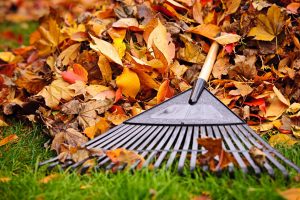
Fall is well-known for its unique hues of orange and red. The leaves shed their green color and drift away into shabby chic table decor or piles of fun for the kids to conquer. While it’s a season vastly famous for pumpkins and hay, there is much more to keep in mind about gardening and landscaping in the fall. These are just a few of the tips and tricks to keep in mind when preparing your yard and garden in the autumn season:
Preparing the Soil
While you are clearing your garden plot, remember that soil should not simply be tilled and left to face the freezing cold winter days. It’s important that it is primed to facilitate new growth of crops in the upcoming seasons. In order to ensure your soil can produce crops at its best, consider planting cover crops in the off-season. Cereal rye, for example, is great for keeping the soil alive and helping to prevent weeds from overtaking the space.
Also, avoid adding tomato or pepper plant compost to your soil. This way you won’t risk any disease spreading into the soil and harming next year’s harvest. It’s safer just to throw away or burn the plants that still have inedible fruits intact. While you’re at it, you can also remove any weeds that start to develop in the fall so they won’t overtake your garden by the time spring arrives.
Lawn Maintenance
Take the time to rake the leaves and sticks so that the grass can still get the necessary sunlight for the remainder of the autumn season. If you do not remove the leaves in the fall, you run the risk of preventing the new grass from growing in spring. It’s also a safety precaution so that you don’t slip or trip on these things during a snowy or wet winter. While you are managing the leaves, be sure to check your gutters and downspouts to ensure they are not clogged.
Fall is also a great time to aerate and fertilize the lawn, because the ground is not too muddy and not too dry for the aerator. Also continue to water the lawn in fall, especially if you live in warm climates or areas that get little rain. Just be sure to clear the sprinkler system of all remaining water to prevent a pipe bursting in freezing winter temperatures. Then during the final cut of the season, cut the grass short to avoid mold during the winter.
Manage Your Supplies
Take some time to assess and clean your lawn and garden supplies. This way they can be stored in a clean, dry area where you will be able to find them when the new season arrives. Also disconnect the hose from the house and drain it. Many new homes have a faucet and spigot system that helps prevent water freezing inside the pipes. However, if the hose is not removed the water can freeze and expand inside the pipes. If your house does not have a freeze-proof faucet, you may need to install one.
For your larger lawn equipment such as a lawn mower, you may need to take a few extra measures to make sure it stays in good working condition throughout the winter. After you’ve cut the lawn for the final time of the year, you can let the lawn mower run long enough to use up all of the gas, drain the remaining fuel, or add a fuel stabilizer to the gas tank so that the gas doesn’t clog the carburetor. Also check the filter, spark plugs, and battery to make sure they are in good condition prior to storing the mower.
While everything has it’s season, it’s important to know how to prepare for the next season on the horizon. All of the tips and tricks you can implement in the preparation stage will be fruitful additions to next year’s harvest. By maintaining your yard and garden in the fall season, you can set it up for a wonderful spring season to come.


